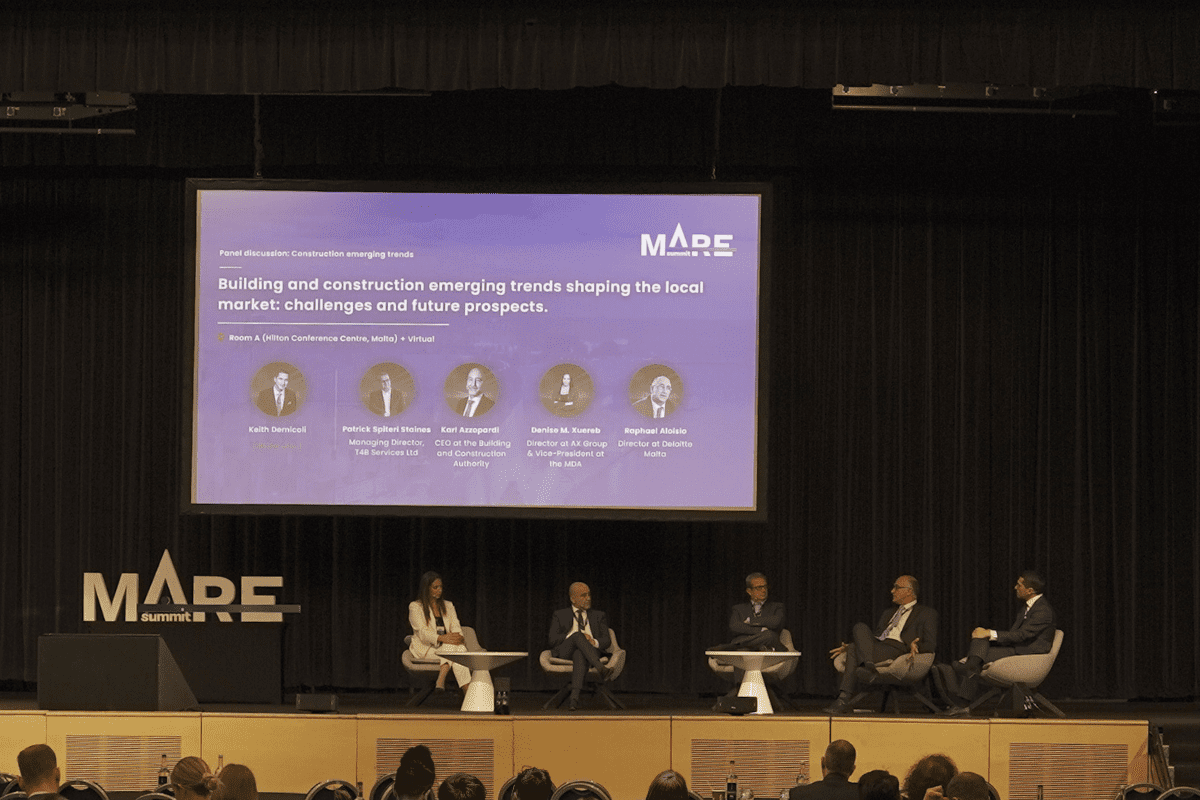Panel discussion: Building and Construction
Description
Today’s world is set to push the construction industry to a redefinition of its own standards through a final acknowledgment of the existing challenges and the exploitation of flourishing opportunities. To meet the needs of our growing population and the sharp rise in demand which will follow, proactive actions will be the foundation of sparking a new chapter. Bold short to long-term strategies will have to be defined, keeping in mind our present realities around skilled labor shortage, resources scarcity, and environmental impacts. In this panel, we will discuss a way to scale the industry responsibly and take advantage of the occasion by the adoption of design-to-make production principles alongside rising digital technologies.
Objetives
Identify the challenges the Building & Construction industry faces and the solutions to overcome them
Speakers
- Patrick Spiteri Staines – Managing Director at T4B Services Ltd.
- Raphael Aloisio – Deloitte Director
- Mrs. Denise M. Xuereb – Construction & Development Director at AX Group & Vice-president at the MDA
- Mr. Karl Azzopardi – CEO at the Building and Construction Authority
Moderator: Keith Demicoli
Panel insights
Background: efforts to regulate the sector
The Building and Construction Authority, launched in 2021, is currently undergoing a process of capacity-building. With the help of decision-makers of the industry, it aims to bridge existing gaps and bring it up to the level of other sectors. The skill gap is being addressed along with the contractors’ licensing regime. Minimum skills will be set for all workers of the industry, both local and foreign, with their training and experience shown on a skill card. As of the construction process, it will include checks and balances at every stage. The aspiration is that each and every project will have a start, completion, and commissioning period.
The maritime, transport, and aviation industries work according to standards. Professionalism means raising the standards of the [construction] industry so it aligns with those of other sectors –Karl Azzopardi
Financial prospects of the building and construction industry
The rising importance of energy sovereignty
The war in Ukraine has served as a wake-up call to the fact that sourcing energy from outside the European Union is not ideal. Energy costs are most likely going to go up in the future, and most of the energy that Malta uses comes from outside the country. Moreover, buildings constitute between 40% and 60% of all energy used in Malta. This calls for both inbuilt energy efficiency measures and zero-energy or positive-energy buildings. Existing regulations must be upgraded to meet this reality, and their stipulations, enforced. Incentives, preferably fiscal, must be set for those that go above and beyond the minimum requirements.
The investments, the codes, the plans, the training… all have to work towards making everything more sustainable –Patrick Spiteri Staines
Latest trends: labour shortages, innovation, and drivers for change
Labour shortages, a pressing issue for the sector, need to be addressed both in the long- and short-terms. With covid restrictions lifted, an immediate solution to tackle present shortages would be to import workers from red zone countries. The problem of training also has to be addressed imminently. The construction industry is still perceived as an unsafe, high-risk, strenuous, and not well-paid sector. We have seen a number of advances in terms of how works are done, the type of structures used, and the technologies employed. However, greener or lighter materials are possibly more expensive and their benefits are less known to the public, which raises questions for who is going to drive the demand for change. To this end, there needs to be a big push for education, training, and awareness of why innovative solutions must be chosen over others. Innovation should be incentivised. The sector is veering towards specialisation. It is now common to include fire, façade, or light and sound consultants on the decision-making process.
Updates and further information about the summit’s developments can be followed on the official blog and on its social media channels.






